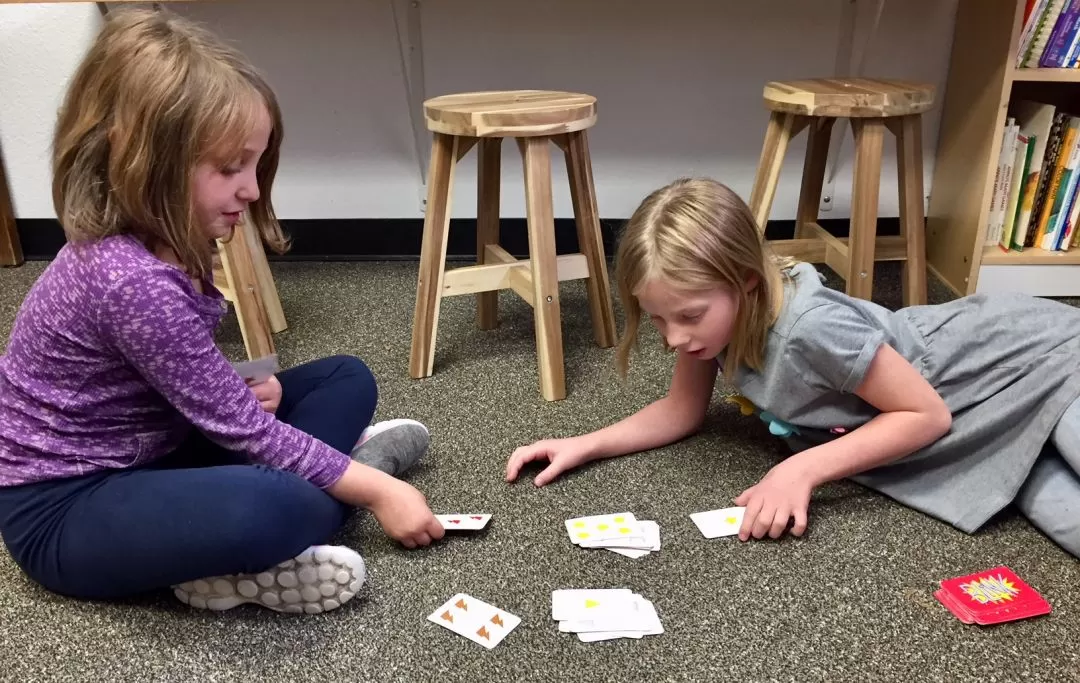“Do not keep children to their studies by compulsion but by play.” This quote attributed to Plato describes something that we all understand: Play keeps us working toward something longer and with more dedication than anything else because it provides a sense of joy and reason for practice, striving, and overcoming obstacles. When visiting a math class at Bixby, you are likely to see kids playing games. Math games motivate kids to practice skills, while providing a social context in which students need to explain their thinking and support their answers creating deeper understanding and connections. Each child is often able to access the game in a way that meets the child’s individual learning needs. Despite all these serious benefits of games, the fact that games are fun is a benefit in itself.
Math games are often chosen to practice a given skill, but by using a game, deeper understanding and strategic thinking about problem solving using the concept is often achieved. For example, 2nd graders have been playing ‘Close to 100,’ a game in which 6 number cards are dealt to each player and 4 are chosen to make two 2-digit numbers whose sum is as close to 100 as possible. Although, this game works on the skill of finding number combinations that add to one hundred, in playing this game, students must think flexibly and develop and share many strategies initiating a deep understanding of place value as it applies to addition.

Games also help individualize instruction. This happens in many ways. When given a choice of games, a student may choose a game that best fits his or her needs. At times, however, I don’t give a choice, and everyone plays the same game. Yet, the way that the student plays, the manipulatives that are used, and the strategies that a child is able to employ, create an individualized learning situation for each child. After playing a common game, we share strategies and thought processes that result in success in the game. In this way, students are able to identify and consolidate what they are learning through the game and learn from each other.
All this discussion of play sounds very serious. It is true that as Jean Piaget once said, “Play is the work of childhood.” Yet, it is the fun in play that makes it worthwhile. Without engagement, learning can’t happen, and games increase engagement because they are fun!



